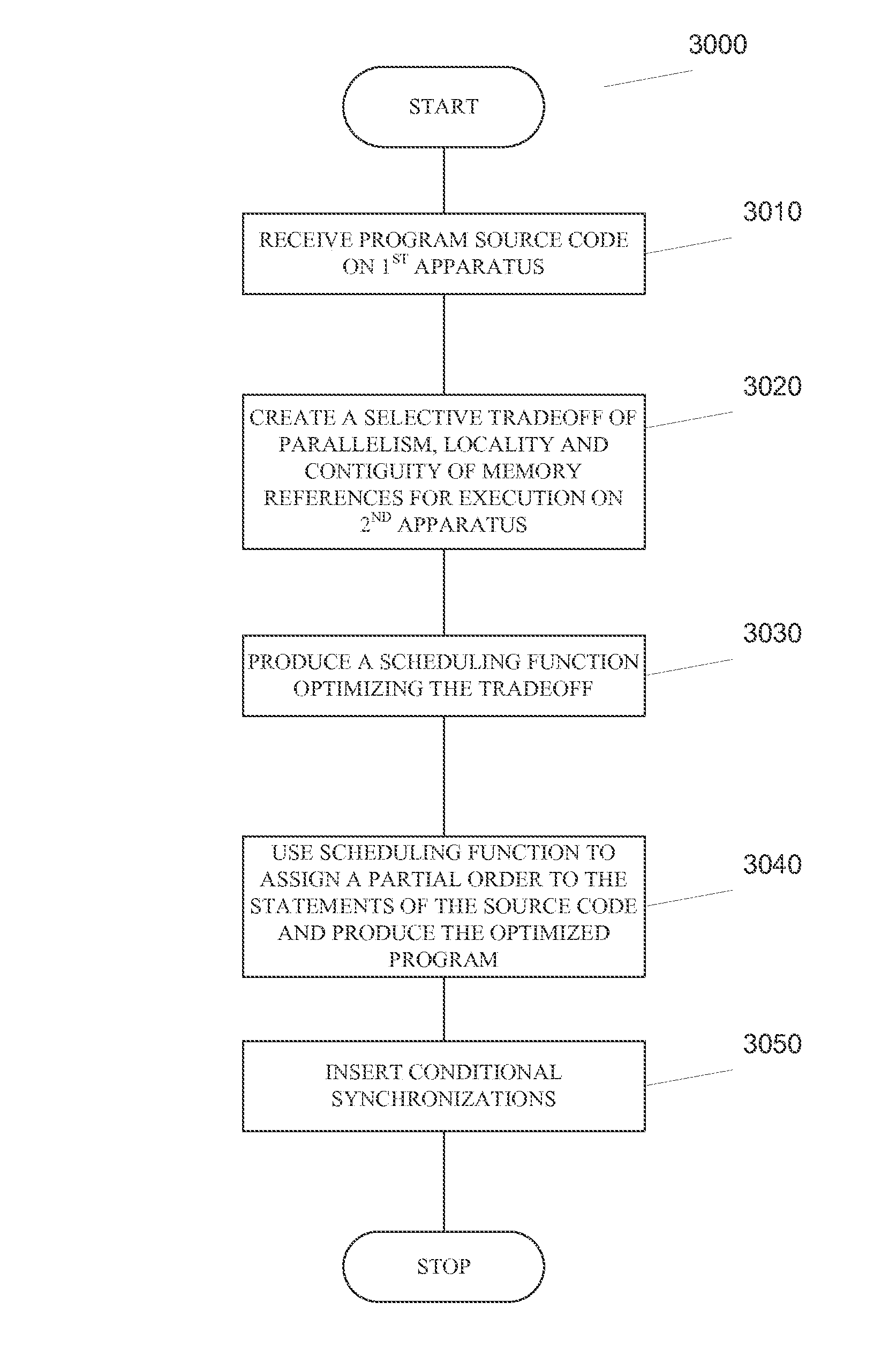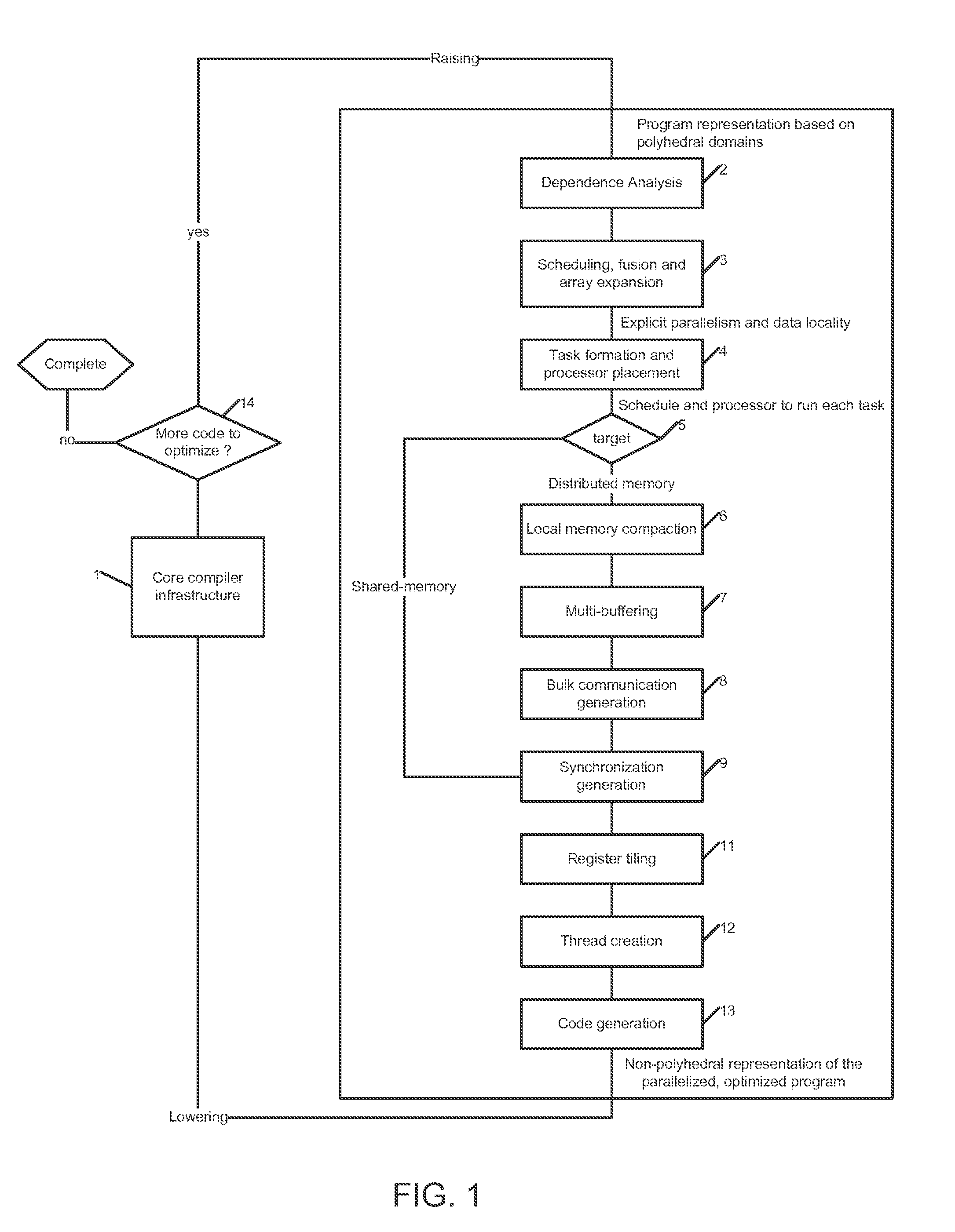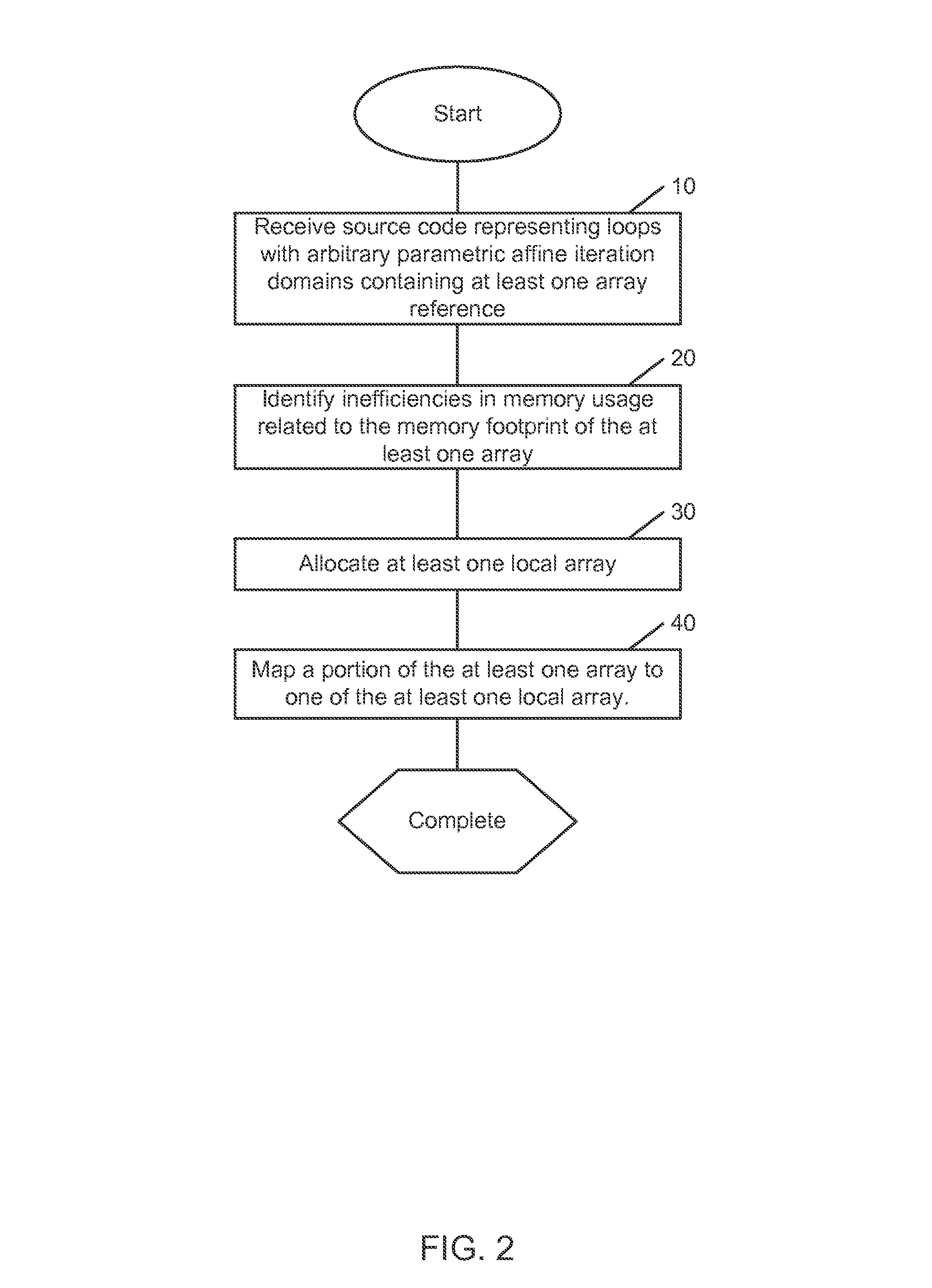System, methods and apparatus for program optimization for multi-threaded processor architectures
a processor architecture and program optimization technology, applied in the field of computer programming, can solve the problems of multiple factors of loss of memory bandwidth, speed and bandwidth of memory subsystems, and current commercially available compilers cannot efficiently take advantage of the increase of computational resources, so as to minimize the total cost, optimize the cost of parallel execution, and minimize the effect of execution costs
- Summary
- Abstract
- Description
- Claims
- Application Information
AI Technical Summary
Benefits of technology
Problems solved by technology
Method used
Image
Examples
second embodiment
[0177]One potential deficiency of this strategy is that up to O(|V′|3 constraints are required. In the second embodiment we adopt, involves the encoding of the β schedule coordinates directly in the constraints. In this encoding, βp=βq implies that loops p and q have been fused:
βp ε{0,|V′|−1} p εV′ (9)
βp≧βq+fpq(p,q)εE′ (10)
βq−βp≧−|V′|fpq, (p,q)εE′ (11)
[0178]Given the constraints on fpq in place, we can now provide a suitable modification to the schedule constraints. The constraints are divided into two types, the first involves edges within the same SCC, and the second involves edges crossing different SCCs:
δp(y)≧φs(e)(j,y)−φt(e)(i,j)≧0, (12)[0179](i,j) εRe(y),[0180]p=scc(s(e)),[0181]q=scc(t(e))[0182]p=q
δpq(y)≧φs(e)(j,y)−φt(e)(i,y)≧−N∞fpq(y), (13)[0183](i,j) ε Re(y),[0184]p=scc(s(e)),[0185]q=scc(t(e)),[0186]p≠q
fpq(y)=fpq(yl+yk+1) (14)
[0187]Here, the term −N∞fpq(y) is defined in such a way that −N∞fpq(y)=0 when fpq=0, and is equal to a sufficiently large negative function wh...
first embodiment
[0241]The flow of a further provided method is illustrated in FIG. 16. This embodiment illustrates alternate embodiments of the flow within blocks 1130 and 1270 in previous embodiments. As illustrated, flow begins in block 1250 where the conditions for semantic correctness of the program are determined. Flow then continues to block 1260 where a search space is derived that meet the conditions for semantic correctness. In one embodiment, the search space characterizes all parallelism and locality opportunities that meet the conditions of semantic correctness. Like previous embodiments, flow then continues to block 1270 where the selective trade off is optimized. In these embodiments, block 1270 includes additional functionality. Block 1270 as illustrated contains three independent optimization paths that may be present in any given embodiment. In the first embodiment, flow begins at block 1300(a) where an element is selected from the search space. Flow then continues to block 1310(a)...
PUM
 Login to View More
Login to View More Abstract
Description
Claims
Application Information
 Login to View More
Login to View More - R&D
- Intellectual Property
- Life Sciences
- Materials
- Tech Scout
- Unparalleled Data Quality
- Higher Quality Content
- 60% Fewer Hallucinations
Browse by: Latest US Patents, China's latest patents, Technical Efficacy Thesaurus, Application Domain, Technology Topic, Popular Technical Reports.
© 2025 PatSnap. All rights reserved.Legal|Privacy policy|Modern Slavery Act Transparency Statement|Sitemap|About US| Contact US: help@patsnap.com



